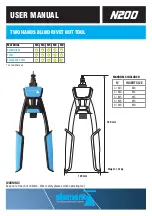
SECTION 4
PIPER AIRCRAFT CORPORATION
NORMAL PROCEDURES
PA-28R-201, ARROW
REPORT: VB-1365
ISSUED: SEPTEMBER 15, 1988
4-20
REVISED: MAY 10, 2009
4.13
ENGINE START (4.5c) (continued)
4.13d Engine Start With External Power Source (4.5c) (continued)
NOTE
Fo r a l l n o r m a l o p e r a t i o n s u s i n g t h e P E P
j u m p e r c a b l e s , t h e b a t t e r y m a s t e r a n d
alternator switches should be OFF.
When the engine is firing evenly, advance the throttle to 800 rpm. If oil
pressure is not indicated within thirty seconds, stop the engine and determine
the trouble. In cold weather, it will take a few seconds longer to get an oil
pressure indication. If the engine has failed to start, refer to the Lycoming
Operating Handbook, Engine Troubles and Their Remedies.
NOTE
Starter manufacturer recommends starter
cranking periods be limited to 10 seconds with
a 2 minute rest period between cranking
periods. Maximum of 5 start periods allowed.
If start is not achieved on fifth attempt allow
s t a r t e r t o c o o l f o r 3 0 m i n u t e s b e f o r e
attempting additional starts.
4.15
WARM-UP (4.5d)
Warm-up the engine at 1400 to 1500 rpm. Avoid prolonged idling at low
rpm, as this practice may result in fouled spark plugs.
Takeoff may be made as soon as the ground check is completed,
provided that the throttle may be opened without backfiring or skipping,
and without a reduction in engine oil pressure.
Do not operate the engine at high rpm when running up or taxiing over
ground containing loose stones, gravel or any loose material that may cause
damage to the propeller blades.
4.17
TAXIING (4.5e)
Before attempting to taxi the airplane, ground personnel should be
instructed and approved by a qualified person authorized by the owner.
Ascertain that the propeller back blast and taxi areas are clear.
SECTION 4
PIPER AIRCRAFT CORPORATION
NORMAL PROCEDURES
PA-28R-201, ARROW
REPORT: VB-1365
ISSUED: SEPTEMBER 15, 1988
4-20
REVISED: MAY 10, 2009
4.13
ENGINE START (4.5c) (continued)
4.13d Engine Start With External Power Source (4.5c) (continued)
NOTE
Fo r a l l n o r m a l o p e r a t i o n s u s i n g t h e P E P
j u m p e r c a b l e s , t h e b a t t e r y m a s t e r a n d
alternator switches should be OFF.
When the engine is firing evenly, advance the throttle to 800 rpm. If oil
pressure is not indicated within thirty seconds, stop the engine and determine
the trouble. In cold weather, it will take a few seconds longer to get an oil
pressure indication. If the engine has failed to start, refer to the Lycoming
Operating Handbook, Engine Troubles and Their Remedies.
NOTE
Starter manufacturer recommends starter
cranking periods be limited to 10 seconds with
a 2 minute rest period between cranking
periods. Maximum of 5 start periods allowed.
If start is not achieved on fifth attempt allow
s t a r t e r t o c o o l f o r 3 0 m i n u t e s b e f o r e
attempting additional starts.
4.15
WARM-UP (4.5d)
Warm-up the engine at 1400 to 1500 rpm. Avoid prolonged idling at low
rpm, as this practice may result in fouled spark plugs.
Takeoff may be made as soon as the ground check is completed,
provided that the throttle may be opened without backfiring or skipping,
and without a reduction in engine oil pressure.
Do not operate the engine at high rpm when running up or taxiing over
ground containing loose stones, gravel or any loose material that may cause
damage to the propeller blades.
4.17
TAXIING (4.5e)
Before attempting to taxi the airplane, ground personnel should be
instructed and approved by a qualified person authorized by the owner.
Ascertain that the propeller back blast and taxi areas are clear.
















































